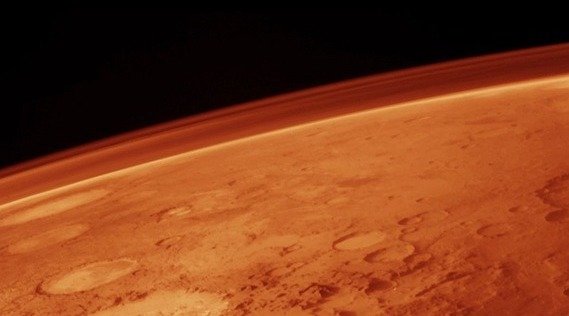Botanists and ecologists at the Chinese Academy of Sciences have identified a plant that could one day be grown as a crop on Mars thanks to its ability to withstand harsh environments.
The desert moss, Syntrichia caninervis, can survive in an environment lethal to most other types of life. In a new study published in The Innovation, scientists exposed this plant to extreme conditions to test its durability.
“Our study shows that the environmental resilience of S. caninervis is superior to that of some highly stress-tolerant microorganisms and tardigrades,” the researchers wrote in their paper. “S. caninervis is a promising candidate pioneer plant for colonizing extraterrestrial environments, laying the foundation for building biologically sustainable human habitats beyond Earth.”
Based on their rigorous tests, the robustness of the desert moss has emerged as a potential candidate for cultivation on Mars. This discovery could have a profound impact on the future of space exploration and colonization, opening up new possibilities for sustainable human habitats beyond Earth.
What is S. caninervis?
This desert moss is one of the most common moss species, with a widespread distribution around the globe, including Antarctica. Its stem is covered with small, sharp, spine-like leaves that help it collect and siphon water to its base. These leaves also have tiny hairs on the ends for further water collection, ensuring the plant gets as much water as possible in an environment where water may only occur in hard-to-access forms, such as dew or fog.
Testing A Plant’s Resilience
Because this plant can survive in nearly impossible areas, the Chinese Academy of Sciences scientists decided to see how harsh an environment it could withstand before dying. They first put some plants in a -80℃ freezer for three to five years, while others were put in a -196℃ tank of liquid nitrogen for 15 and 30 days. In all three environments, the plant could regenerate after being defrosted, though the rebound wasn’t as fast as in samples that had just been dried out instead of frozen.
The researchers also found that the plant could survive high doses of gamma radiation, which would kill most plants. Interestingly enough, at 500 Gy, the scientists found that this level of radiation actually promoted the plant’s growth. For humans, 8 Gy is enough radiation to cause convulsions and death if the exposure is long enough.
“Our results indicate that S. caninervis is among the most radiation-tolerant organisms known,” the researchers noted in their paper.
Simulating the Martian Atmosphere
While these tests revealed S. caninervis’s astounding resilience, the scientists took their tests further by putting the plant in a simulated Martian environment. Using the Chinese Academy of Sciences’ Planetary Atmospheres Simulation Facility, the researchers created an atmosphere of 95% carbon dioxide, with temperatures ranging from -60℃ to 20℃, along with high levels of UV radiation and low atmospheric pressure, all conditions similar to those on Mars.
Mars also lacks accessible water, with much of it locked away as dry ice or on polar ice caps. The lack of a global magnetic field on Mars also means that anything living on the surface would be exposed to a higher level of radiation than that on Earth.
After subjecting groups of plants to this environment for one, two, three, and seven days, the researchers saw that 100% of the plants regenerated after exposure. The plants exposed to the simulator for one day regrew slower than their dried-out counterparts, though both groups had a 100% survival rate.
“Although there is still a long way to go to create self-sufficient habitats on other planets, we demonstrated the great potential of S. caninervis as a pioneer plant for growth on Mars,” the researchers write.
As organizations like NASA, the ESA, and even private companies like SpaceX consider possible colonization projects on Mars, plants like S. caninervis could bring this goal one step closer to reality. By understanding the cellular mechanisms by which this plant survives, geneticists and biologists could try to create genetically modified organisms that may also be able to survive in harsh, Mars-like conditions, making it more feasible to grow plants and other food products on Mars.
The researchers also note that “Looking to the future, we expect that this promising moss could be brought to Mars or the Moon to further test the possibility of plant colonization and growth in outer space.”
Kenna Hughes-Castleberry is the Science Communicator at JILA (a world-leading physics research institute) and a science writer at The Debrief. Follow and connect with her on X or contact her via email at kenna@thedebrief.org

